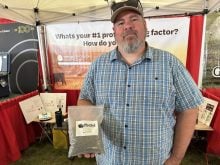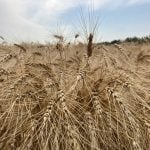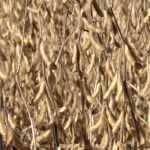Sulphur (S) is one of the big four macronutrient fertilizers required by both plants and animals. Calcium (Ca) and magnesium (Mg) could be added to this list but for reasons unknown they are given a lesser role in crop production in North America.
When I was first involved in agriculture in the 1950s, nitrogen (N) was king, followed by phosphate (P) and trailing this was potash (K), since it had supposed limitless soil levels. Calcium and to a lesser degree magnesium in my part of the world were very important since most of our soils were acidic with a pH of 5 or less and needed calcium and magnesium carbonates to raise the soil pH to a productive pH of 6 or higher.
Read Also

The issue with scar tissue
Without a healthy amount of movement, friction and influence during the healing process, scar tissue may later disrupt how the body moves around it, so maintenance is needed as soon as an incision or wound heals over, Kathlyn Hossack writes.
As a young gardener and farmer, I could buy ammonium phosphate or ammonium sulphate coupled perhaps with plain phosphate fertilizers.
Why no mention of sulphur?
For some unknown reason, particularly in North America, while engaged in academic and research projects I would often carefully read the labels of particular “complete” fertilizer products. For reasons unknown, these labels would list all the macronutrients but never a mention of sulphur. I recently read the label of a major brand of garden and greenhouse wonder fertilizer. Nitrogen is listed as essential for proteins and DNA, phosphate is listed essential for energy, potash is mentioned but not given any function as well as all the micronutrients, Boron (B), Molybdenum (Mo), Copper (Cu), Zinc (Zn), Manganese (Mn) and Iron (Fe). Why is sulphur not mentioned?
Two amino acids that contain sulphur are methionine and cystine of the 20 common amino acids involved in the formation of protein. No sulphur, no specific essential proteins. Growth stops in the absence of sulphur.
In much of my field plot work and horticultural pursuits, I would use ammonium phosphate or ammonium sulphate purchased in 50-pound or now in 25-kilogram plastic bags. On the bag labels in plain numbers the ammonium phosphate was listed as 16:20:0 (N, P, K) and the ammonium sulphate as 22:0:0 with not a mention of any sulphur. In the last few years, finally on these fertilizer bags the essential S nutrient is now in place — ammonium phosphate is listed as 16:20:0:15 and ammonium sulphate as 22:0:0:24. Finally an admission that these plant nutrient products contained sulphur, an absolutely essential macronutrient.
Sulphur pollution
This omission during the 1970s was to cause major problems in agriculture both in Europe as well as North America. In Canada’s instance, when I was on the faculty at the University of Guelph, sulphur was not as much a plant nutrient as a plant, water and air pollutant. The polluted industrial air over most of Ontario in the ’70s would deposit anything from 15 to as high as 100 pounds (seven to 45 kilograms) of sulphur per acre of the provincial cropland.
Similar circumstances occurred over much of Eastern Canada and the bulk of the Eastern United States. This aerial sulphur mainly in the form of sulphur dioxide came from the burning of coal, oil and gas as well as gasoline driven vehicles, and since most winds were westerly the sulphur invaded these croplands moving eastwards rather than westwards, where the sulphur dioxide would be deposited in normal rainfall.
On the other hand, in the Prairie provinces there was much less industrial activity as well as in the adjoining United States. As a consequence, the S deposition was usually less than two pounds (one kilogram) per acre of cropland. Crop nutrient recommendations in the East in those days rarely mentioned sulphur since it was abundantly present and continually being deposited in cropland soils.
Some of these aerial sulphur compounds also come from volcanic activity, marshlands and decaying organic matter and is distributed worldwide.
In recent times, sulphur pollution has been greatly reduced — so much so that some croplands in Eastern North America now require sulphur for specific high-demand crops, such as canola.
When I took up my position with Alberta Agriculture in the 1970s, I was checking canola fields in the west-central area of Alberta on sandy soil since yields in these areas were very low.
Fields critically deficient in sulphur
I was asked to look for disease but what I finally found out was these particular fields were desperately deficient in sulphur. The canola plants were much smaller than usual and they produced only a few full pods while the rest of the pods were blanks, even the stinkweed had empty pods. One field in particular (Polish canola) yielded only five bushels an acre. I took a lot of flak from a range of agronomists until I was able to show from soil tests that this cropland had only one pound of available sulphur in the top 24 inches.
So, what was the problem? Up to the 1960s and into the early ’70s, the fertilizers of choice were ammonium sulphate and ammonium phosphate with no mention to farmers about the sulphur content. What was happening in those days was farmers were switching to urea and ammonia as a source of N alone, none of which contained any sulphate.
Sulphate, like nitrogen and boron, is easily leached from soils, particularly sandy soils. Canola is a high sulphur requiring crop and within a few years of using urea or ammonia as the N source, the sulphur in many soil profiles was rapidly running out. A modest 35-bushel crop of canola requires a minimum of 21 pounds (10 kilograms) of available sulphur to attain that yield. Wheat and barley only needed half that amount at 60 and 80 bushels an acre, respectively.
While Eastern Canada still has significant airborne S, the West was running out of this essential macronutrient. A simple case of polluted air versus the cleaner air of the West. A simple reason why crop production in the East had never worried about sulphur, the silent plant nutrient.
In Western Canada, we have had visiting soil fertility speakers from the East who would talk about wheat and barley nutrients for high yields without even mentioning the need for sulphur. From a horticultural point of view, I checked out garden claims in the West as to how various vegetable and flower crops responded to magnesium sulphate. No, it was not the magnesium that was making the cabbages greener or the tomatoes bigger, it was the sulphate component. Garden soils in the West, especially sandy and peaty soils, are frequently deficient in sulphur and not magnesium as the “experts” told you.
What form to choose
When sulphur is added to cropland it is, of course, an acidifying agent but there is frequent controversy as to the sulphur source. If it is in the form of ammonium sulphate, it is readily available to crop plants. If it is in the form of calcium sulphate (gypsum) it is slowly available, but if it is in the form of elemental sulphur (nutrimental sulphur), it takes a little time to become available.
Whether you use any form of sulphur it makes no difference to the crop that you intend to grow if it has adequate available sulphur for its optimum or target yield. If your cropland is deficient in sulphur use the ammonium form. If you are a good cropland manager use the cheaper elemental form if your soil tests show that the natural oxidation process by your soil sulphur bacteria is fully meeting your crop nutritional sulphur requirement needs.















